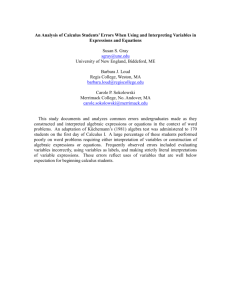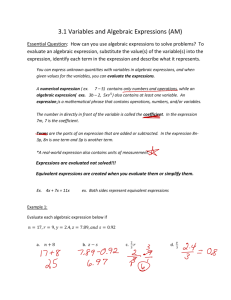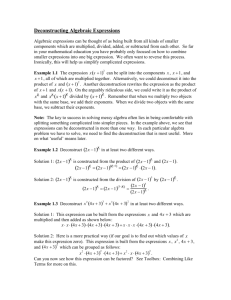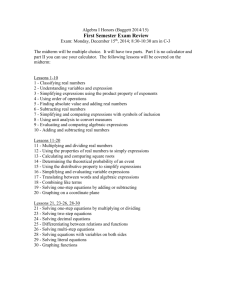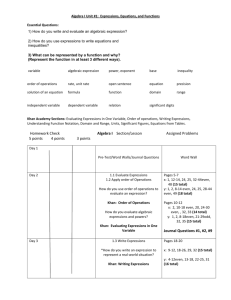Instructional Strategies and
advertisement
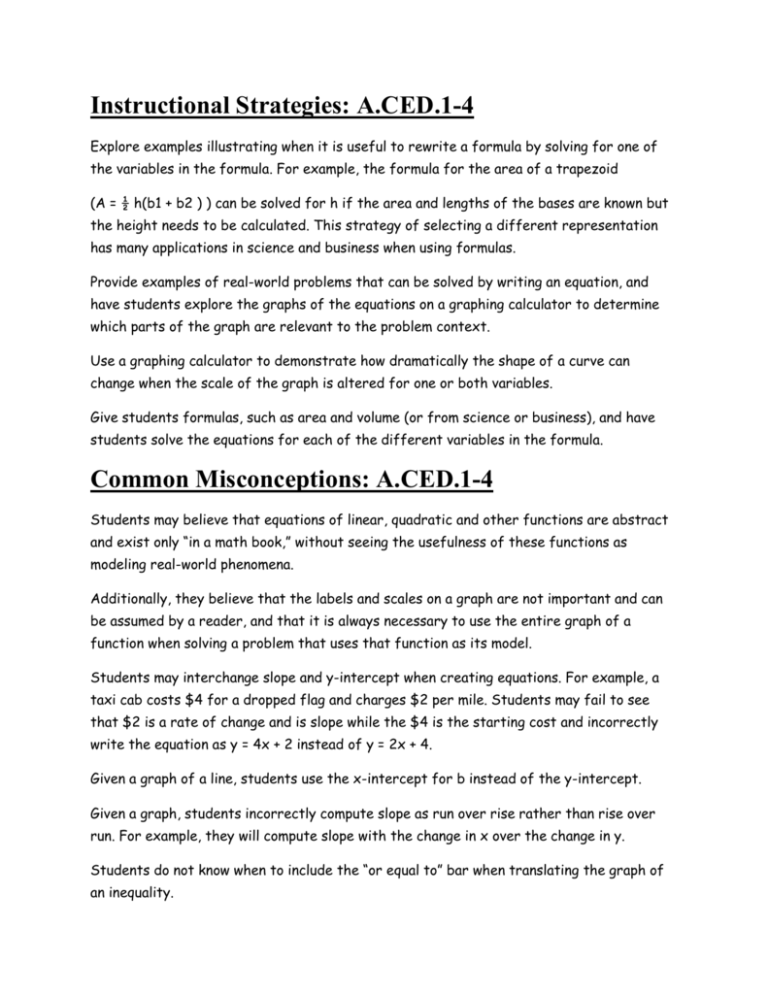
Instructional Strategies: A.CED.1-4 Explore examples illustrating when it is useful to rewrite a formula by solving for one of the variables in the formula. For example, the formula for the area of a trapezoid (A = ½ h(b1 + b2 ) ) can be solved for h if the area and lengths of the bases are known but the height needs to be calculated. This strategy of selecting a different representation has many applications in science and business when using formulas. Provide examples of real-world problems that can be solved by writing an equation, and have students explore the graphs of the equations on a graphing calculator to determine which parts of the graph are relevant to the problem context. Use a graphing calculator to demonstrate how dramatically the shape of a curve can change when the scale of the graph is altered for one or both variables. Give students formulas, such as area and volume (or from science or business), and have students solve the equations for each of the different variables in the formula. Common Misconceptions: A.CED.1-4 Students may believe that equations of linear, quadratic and other functions are abstract and exist only “in a math book,” without seeing the usefulness of these functions as modeling real-world phenomena. Additionally, they believe that the labels and scales on a graph are not important and can be assumed by a reader, and that it is always necessary to use the entire graph of a function when solving a problem that uses that function as its model. Students may interchange slope and y-intercept when creating equations. For example, a taxi cab costs $4 for a dropped flag and charges $2 per mile. Students may fail to see that $2 is a rate of change and is slope while the $4 is the starting cost and incorrectly write the equation as y = 4x + 2 instead of y = 2x + 4. Given a graph of a line, students use the x-intercept for b instead of the y-intercept. Given a graph, students incorrectly compute slope as run over rise rather than rise over run. For example, they will compute slope with the change in x over the change in y. Students do not know when to include the “or equal to” bar when translating the graph of an inequality. Students do not correctly identify whether a situation should be represented by a linear, quadratic, or exponential function. Students often do not understand what the variables represent. For example, if the height h in feet of a piece of lava t seconds after it is ejected from a volcano is given by h(t) = -16t² + 64t + 936 and the student is asked to find the time it takes for the piece of lava to hit the ground, the student will have difficulties understanding that h = 0 at the ground and that they need to solve for t. Extending beyond simplifying an expression, these standards address interpretation of the components in an algebraic expression. A student should recognize that in the expression 2x + 1, “2” is the coefficient, “2” and “x” are factors, and “1” is a constant, as well as “2x” and “1” being terms of the binomial expression. Development and proper use of mathematical language is an important building block for future content. Using real-world context examples, the nature of algebraic expressions can be explored. Have students create their own expressions that meet specific criteria (e.g., number of terms factorable, difference of two squares, etc.) and verbalize how they can be written and rewritten in different forms. Additionally, pair/group students to share their expressions and rewrite one another’s expressions. Hands-on materials, such as algebra tiles, can be used to establish a visual understanding of algebraic expressions and the meaning of terms, factors and coefficients. Technology may be useful to help a student recognize that two different expressions represent the same relationship. For example, since (x – y)(x + y) can be rewritten as x² – y², they can put both expressions into a graphing calculator (or spreadsheet) and have it generate two tables (or two columns of one table), displaying the same output values for each expression. Factoring by grouping is another example of how students might analyze the structure of an expression. To factor 3x(x – 5) + 2(x – 5), students should recognize that the “x – 5” is common to both expressions being added, so it simplifies to (3x + 2)(x – 5). Students should become comfortable with rewriting expressions in a variety of ways until a structure emerges.

